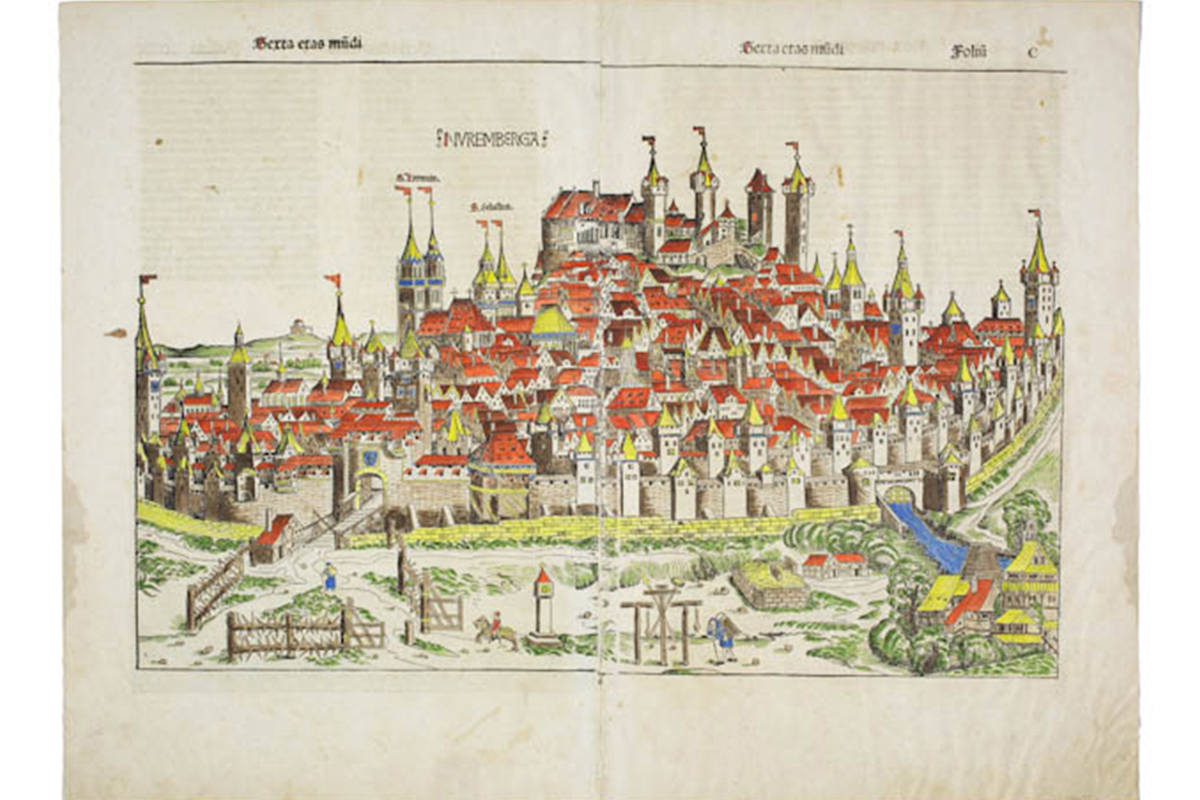
The Nuremberg Chronicle
Colleen McDermott is the Brown Post-Baccalaureate Curatorial Fellow in the Cunningham Center.
The Smith College Museum of Art is dedicated to bringing out works on paper into the main galleries, where all visitors can see them. Since works on paper are more sensitive to light than other mediums, SCMA has installed special Works on Paper cabinets throughout the galleries for the display of prints, drawings and photographs. Today’s post is part of a series about the current installations of the Works on Paper cabinets, which will remain on view through May 2016.
The Nuremberg Chronicle is a German book detailing the history of the world from the biblical account of creation to 1493, the date of its publication. Though its official title is the Liber Chronicarum (Book of Chronicles), it is usually referred to in English after Nuremberg, the city which it was printed in. It is best known for its vast number of woodcut images—over 1800 in total, depicting a variety of people, places, and historical events. The Works on Paper cabinet brings together pages of the chronicle at Smith with those from the Mead and the Mount Holyoke College Art Museum. In addition, there is an original copy of the Nuremberg Chronicle on loan from the Mortimer Rare Book Room.
The breadth of material covered in the Chronicle is impressive. With the rediscovery of Greek and Roman literature and texts during the Renaissance, scholars began looking for connections between themselves and antiquity. They sought to fit these new narratives and histories into their own Christian understanding of the world. The Nuremberg Chronicle is an example of how scholars pieced together classical, biblical, and contemporary political history into a single unified timeline.
This two-page spread of Nuremberg is the largest, most intricately detailed image in the book. While the printers did produce special colored editions of the Nuremberg Chronicle, these pages were likely hand-colored by the book’s owner, which was common practice at the time.
Though stylized, it is an accurate portrait of the city during the late fifteenth century, giving a sense of the crooked buildings and narrow streets that lead to the castle at the top of the hill. The city gate bears Nuremberg’s coat of arms, and there are two small notes identifying the churches of St. Lorenz and St. Sebald. Next to the river, the building in the lower right corner of the page is the mill where the paper for the Chronicle was made. Yet for all its modernity, the artists make sure to remind readers of the presence of Christ. In the lower center of the page, a pedestrian with sack in hand walks towards three crosses—a clear reminder of the crucifixion of Jesus Christ and the two thieves.
The cabinet is on view on the second floor of the galleries until May 2016. I encourage you to see it if you have the chance!